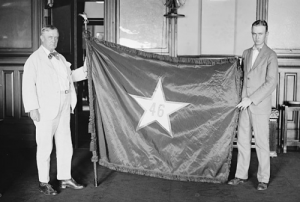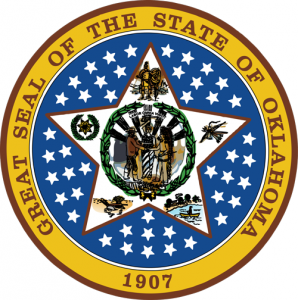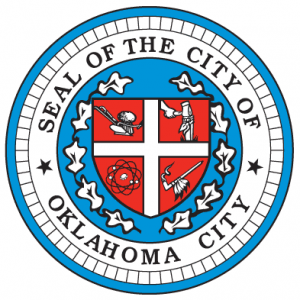Oklahoma gets state flag by Fluke

The story of Oklahoma’s state flag is actually a Fluke. A Louise Fluke, that is.
In 1911, 105 years ago, Oklahoma revealed its first flag. It was a fluke in the usual sense. Using the red, white and blue colors of Old Glory, the state banner sported a white star with “46” in the middle, denoting that the Sooner State was the 46th member of the United States.

That version didn’t last long. In 1924, a contest allowed people to suggest a new state flag, and the winner was Louise Fluke, a native of Arkansas who moved to Oklahoma when she was one. She studied art at Columbia University and the Chicago Art Institute.
Her design was a field of blue on which lay emblems of Native Americans, including a calumet and seven eagle feathers. Fluke’s arrangement has remained ever since, although the flag was changed slightly 75 years ago. In 1941, the name of the state was added. The Indian Journal, a Native American newspaper published in Oklahoma, lauded the design for its inclusion of tribal images.
 When Mrs. Fluke died 30 years ago, Oklahoma’s governor ordered that flags be flown at half-staff in her memory.
When Mrs. Fluke died 30 years ago, Oklahoma’s governor ordered that flags be flown at half-staff in her memory.
But that doesn’t end the history of Oklahoma flags. While Texas brags about waving six flags over the course of its history, its northern neighbor gloats about its 14 banners. According to the Oklahoma Historical Society, they are the Royal Standard of Spain, Union Jack of Great Britain, Royal Flag of France, Standard of the Empire of Spain, Standard of France, Second National United States Flag, Third National United States Flag, Flag of the Republic of Mexico, First Flag of the Republic of Texas, Second Flag of the Republic of Texas, Flag of the Choctaw Nation, First National Flag of the Confederacy, First Oklahoma State Flag and Oklahoma State Flag.
 The Sooners sooner or later also created a state seal: a five-pointed star and the Oklahoma motto: “Labor Omnia Vincit” (“Work conquers all”). A pioneer and an American Indian shake hands on the seal while 45 stars twinkle, representing all the states that preceded Oklahoma into the Union.
The Sooners sooner or later also created a state seal: a five-pointed star and the Oklahoma motto: “Labor Omnia Vincit” (“Work conquers all”). A pioneer and an American Indian shake hands on the seal while 45 stars twinkle, representing all the states that preceded Oklahoma into the Union.
The state capital, Oklahoma City, has its own municipal flag. Adopted in 1994, the banner places the city’s seal on a white field. The seal contains many symbols, including a hatchet and stake, which represent early settlers staking their claim to land; a plow to recognize agriculture; a peace pipe and eagle feathers that salute Native Americans and symbolize high hopes; and a spinning atom to stand for industry and science.
 While the city flag appears to show a Christian cross, something which has caused controversy in other locations, Mark McFarland, the creator of the design, insists that it is an “artistic divider” and not a religious element.
While the city flag appears to show a Christian cross, something which has caused controversy in other locations, Mark McFarland, the creator of the design, insists that it is an “artistic divider” and not a religious element.
So far, the flag has been OK in OK.
Buy an Oklahoma Flag
